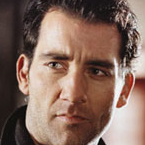RangerJoe
Posts: 13450
Joined: 11/16/2015
From: My Mother, although my Father had some small part.
Status: offline

|
quote:
ORIGINAL: obvert
An interesting article on the stresses that this pandemic is adding to an already difficult financial situation for many US hospitals. I had no idea for instance that the US government spending for healthcare per capita was more than is spent in a number of countries with nationalised healthcare.
https://www.ft.com/content/3bbb4f7c-890e-11ea-a01c-a28a3e3fbd33
The US government funds more than half of healthcare spending — but it does not run the hospital system. Instead, it supplies public insurance in the form of Medicare, for seniors, and Medicaid, for the poorest, paying through a fragmented network of healthcare providers. To get by, hospitals must also have enough money coming in from commercial insurers or beg for extra subsidies.
Many are on the brink. More than a hundred have closed in the past decade, and a report last month from consultancy BCG estimated that 20 per cent were at “near-term risk of insolvency” before the pandemic. They now think the figure is between 30-40 per cent.
The high number of uninsured people in the US compounds the challenges of responding to coronavirus. At least 27 million Americans lack any health insurance, and that figure is set to rise as millions more lose their jobs. Without insurance, patients risk getting saddled with high bills from emergency room visits that they cannot pay, forcing bad debt on to the hospitals.
Even though the US spends trillions of dollars on healthcare, much of that is wasted. The funding gets used up by bureaucrats that have to code and bill every action a doctor takes, by doctors and hospital administrators paid far more than their European counterparts and by the soaring cost of drugs. A study last year in The Journal of the American Medical Association found at least $760bn was wasted in unnecessary health spending — more than the US spends on primary and secondary education.
Poorer hospitals that cater to low-income urban communities, or rural areas where population is declining, are dependent on government insurance. They say the payments from Medicaid do not cover their costs as the price of staff, equipment and drugs rises.
---------------
Initial data suggests the disease has had a disproportionate impact on communities of colour. In New York, black and Latino people are twice as likely to die as white people. At One Brooklyn, the group has seen a high rate of hospitalisation among its coronavirus-positive patients. “Our community has been very significantly affected,” says Brown. “There is a reality that many of the hospitals that serve low-income communities of colour have the least amount of resources . . . Any public health crisis will uncover inequalities.”

Ten percent of all Medicare and Medicaid spending is for fraud. Some unintended but most intentional. The chance of getting caught is relatively low with businesses going in and out of business under different names at different locations. The ones that stay in business at the same place and location are most likely to be caught. I read where one group home charged for therapy sessions that did not take place. In fact, one individual was in jail during the time that he was supposedly undergoing therapy.
I saw on television where an insurance company would be billed $4000 for a CAT scan, while Medicare/Medicaid would be billed between 2400-2600. If a person offered to pay the bill that day, that person would be charged $400.
In a study, if a person went to a doctor with a lingering chest cold there was the chance of either an average 4 x-rays or less than 1. The difference? Whether or not the doctor's office owned an x-ray machine.
If a person agrees to pay for "out of coverage" medical tests or care, then the bills can really escalate. The doctors don't have to go through the in coverage lab but can go to a different one, like the one that the doctors own.
quote:
Bill Of The Month
For Her Head Cold, Insurer Coughed Up $25,865
December 23, 2019
Alexa Kasdan had a cold and a sore throat.
The 40-year-old public policy consultant from Brooklyn, N.Y., didn't want her upcoming vacation trip ruined by strep throat. So after it had lingered for more than a week, she decided to get it checked out.
Kasdan visited her primary care physician, Roya Fathollahi, at Manhattan Specialty Care, just off Park Avenue South and not far from tony Gramercy Park.
The visit was quick. Kasdan got her throat swabbed, gave a tube of blood and was sent out the door with a prescription for antibiotics.
She soon felt better, and the trip went off without a hitch.
Then the bill came.
Patient: Alexa Kasdan, 40, a public policy consultant in New York City, insured by Blue Cross and Blue Shield of Minnesota through her partner's employer.
Total bill: $28,395.50 for an out-of-network throat swab. Her insurer cut a check for $25,865.24.
Service provider: Dr. Roya Fathollahi, Manhattan Specialty Care.
Medical service: lab tests to look at potential bacteria and viruses that could be related to Kasdan's cough and sore throat.
What gives: When Kasdan got back from the overseas trip, she says there were "several messages on my phone, and I have an email from the billing department at Dr. Fathollahi's office."
The news was that her insurance company was mailing her family a check — for more than $25,000 — to cover some out-of-network lab tests. The actual bill was $28,395.50, but the doctor's office said it would waive her portion of the bill: $2,530.26.
"I thought it was a mistake," she says. "I thought maybe they meant $250. I couldn't fathom in what universe I would go to a doctor for a strep throat culture and some antibiotics and I would end up with a $25,000 bill."
https://www.npr.org/sections/health-shots/2019/12/23/787403509/for-her-head-cold-insurer-coughed-up-25-865
Surprise medical bills: How you can fight back
By Walecia Konrad
November 23, 2016
quote:
Surprise medical bills: How you can fight back
By Walecia Konrad
November 23, 2016 / 5:15 AM / MoneyWatch
Last week, the New England Journal of Medicine published a comprehensive report on something thousands of health care consumers have been grappling with for years: surprise out-of-network medical bills.
Take the woman in Charleston, South Carolina, who underwent an emergency C section. The in-network anesthesiologist wasn’t available, so she faced a $15,000 bill for the out-of-network doctor who replaced him.
Or consider the man from Grapevine, Texas, who underwent an emergency appendectomy with an out-of-network surgeon -- the one who was on duty at the time. His bill: $950.
So-called surprise billing comes about when patients visit a hospital or emergency room that’s part of their insurance company’s network, but then they receive care from a doctor or other provider who isn’t part of that network. That provider sends a bill directly to the patient, usually for the difference between the in-network contracted price and the provider’s full fee.
The authors of The New England Journal of Medicine study looked specifically at surprise billing in ER situations. They found that 22 percent of the time, patients who went to the ER at a hospital covered by their plan received treatment -- and a bill -- from an out-of-network doctor.
https://www.cbsnews.com/news/surprise-medical-bills-how-you-can-fight-back/
Those don't include billing errors, or exhorbitent billing such as five dollars for two Paracetamol, also known as acetaminophen (tylenol) but you are not allowed to bring in your own bottle of 100 which costs $4 or less. Always check the bill for errors, some things are added in a package even though you may not have received it.
_____________________________
Seek peace but keep your gun handy.
I'm not a complete idiot, some parts are missing!
“Illegitemus non carborundum est (“Don’t let the bastards grind you down”).”
― Julia Child
|
 Printable Version
Printable Version








 . Bolsonaro says 'so what'. I'm hoping it doesn't contravene the no politics rule to suggest he seems to be a pretty awful piece of work.
. Bolsonaro says 'so what'. I'm hoping it doesn't contravene the no politics rule to suggest he seems to be a pretty awful piece of work. 













 New Messages
New Messages No New Messages
No New Messages Hot Topic w/ New Messages
Hot Topic w/ New Messages Hot Topic w/o New Messages
Hot Topic w/o New Messages Locked w/ New Messages
Locked w/ New Messages Locked w/o New Messages
Locked w/o New Messages Post New Thread
Post New Thread